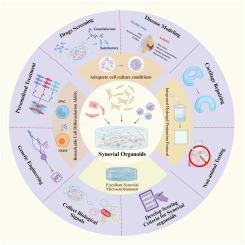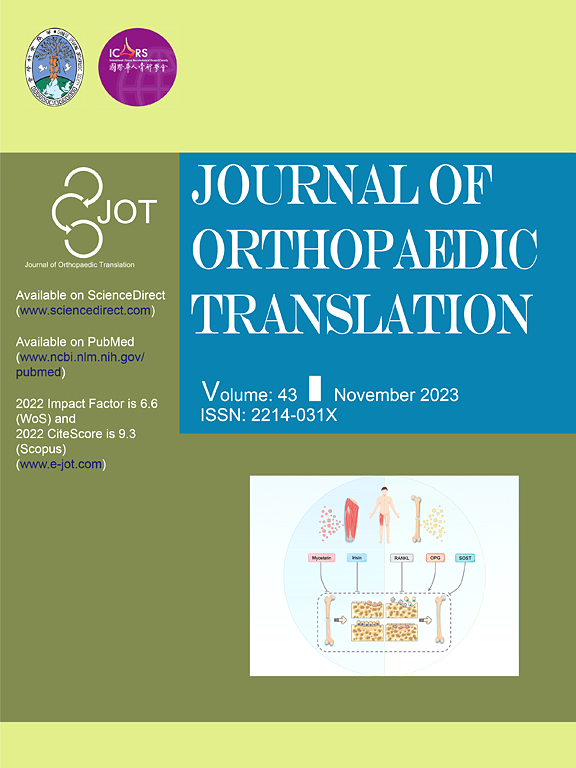滑膜类器官:从基础结构到关节炎疾病的突破性应用
IF 5.9
1区 医学
Q1 ORTHOPEDICS
引用次数: 0
摘要
滑膜类器官作为一种新兴的三维(3D)细胞培养模型,能够高度模拟滑膜组织的体内结构和功能,为滑膜相关疾病的研究提供了新的有力工具。本文从细胞来源、培养体系和构建技术等方面详细阐述了滑膜类器官的构建。同时,综述了滑膜类器官在类风湿关节炎、骨关节炎等关节炎疾病发病机制、药物开发、个体化治疗等方面的应用进展。同时探讨了滑膜类器官目前面临的挑战和未来发展方向,为滑膜类器官在相关疾病中的进一步研究和应用提供参考。滑膜类器官能够直接模拟人类滑膜关节,为高通量药物筛选提供生理学相关平台。患者来源的类器官不仅促进了个性化医疗的发展,而且减少了对临床前验证动物研究的依赖。这种方法解决了伦理挑战和物种特异性限制,同时增强了与人类疾病机制的转化相关性。本文章由计算机程序翻译,如有差异,请以英文原文为准。

Synovial organoids: From fundamental construction to groundbreaking applications in arthritic disorders
As an emerging three-dimensional (3D) cell culture model, synovial organoids can highly mimic the structure and function of synovial tissue in vivo, providing a new and powerful tool for the research of synovial-related diseases. This article elaborated in detail on the construction of synovial organoids from the cell sources, culture systems, and construction techniques. Meanwhile, it comprehensively reviewed the application progress of synovial organoids in arthritic diseases including rheumatoid arthritis and osteoarthritis such as disease pathogenesis, drug development, and personalized therapy. Additionally, it explores current challenges and future directions for synovial organoids, providing a reference for further research and applications in related-diseases.
The Translational Potential of this Article
Synovial organoids enable direct modeling of the human synovial joint, offering a physiologically relevant platform for high-throughput drug screening. Patient-derived organoids not only facilitate the development of personalized medicine but also reduce reliance on animal studies for preclinical validation. This approach addresses ethical challenges and species-specific limitations while enhancing the translational relevance to human disease mechanisms.
求助全文
通过发布文献求助,成功后即可免费获取论文全文。
去求助
来源期刊

Journal of Orthopaedic Translation
Medicine-Orthopedics and Sports Medicine
CiteScore
11.80
自引率
13.60%
发文量
91
审稿时长
29 days
期刊介绍:
The Journal of Orthopaedic Translation (JOT) is the official peer-reviewed, open access journal of the Chinese Speaking Orthopaedic Society (CSOS) and the International Chinese Musculoskeletal Research Society (ICMRS). It is published quarterly, in January, April, July and October, by Elsevier.
 求助内容:
求助内容: 应助结果提醒方式:
应助结果提醒方式:


